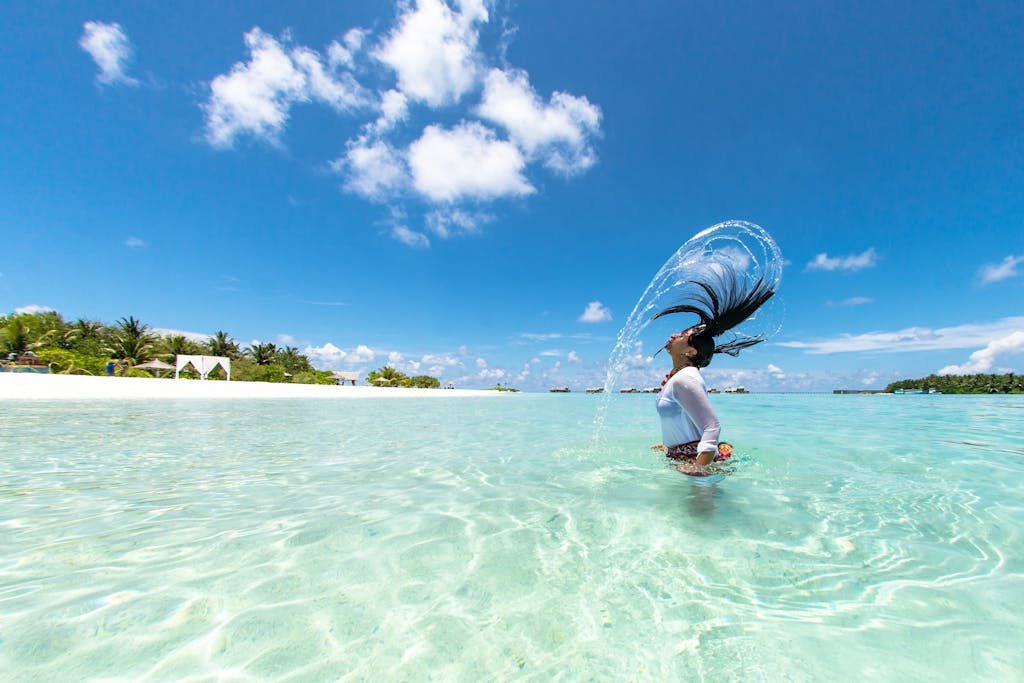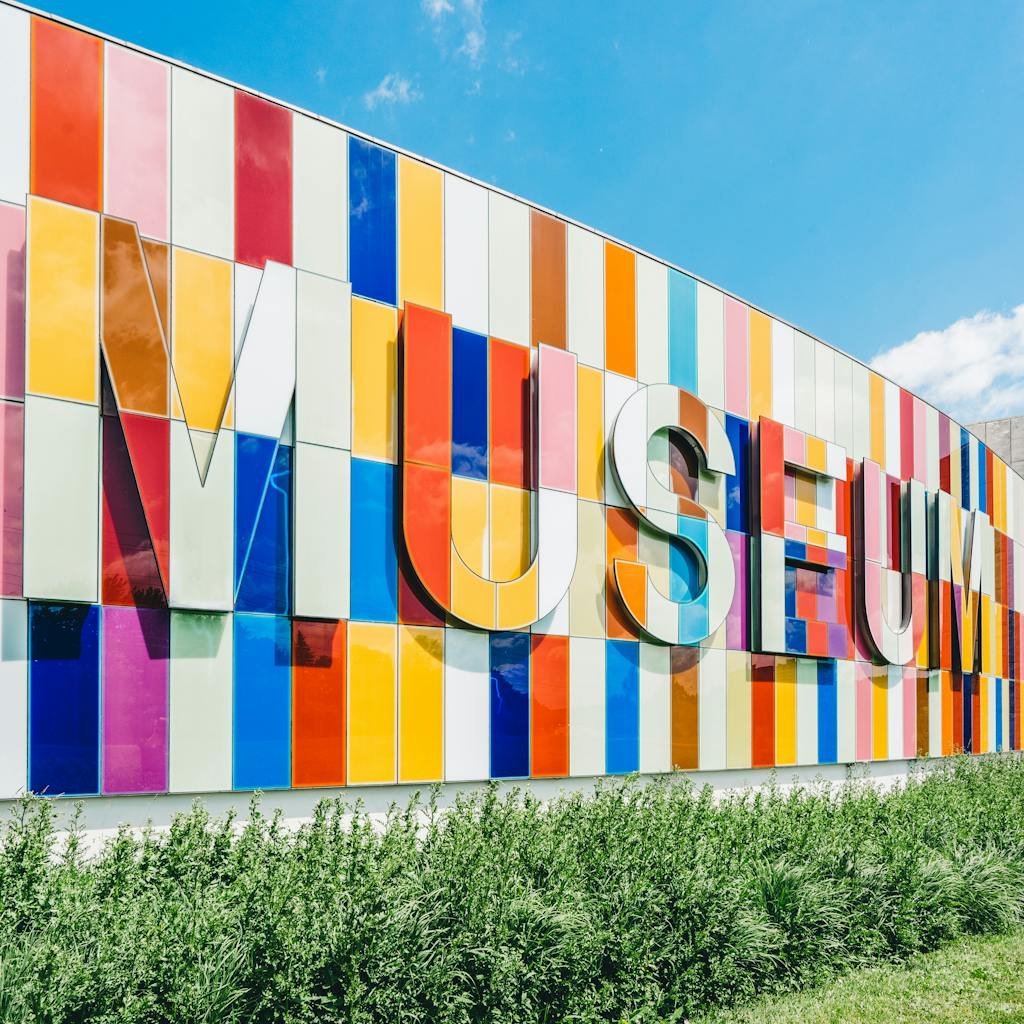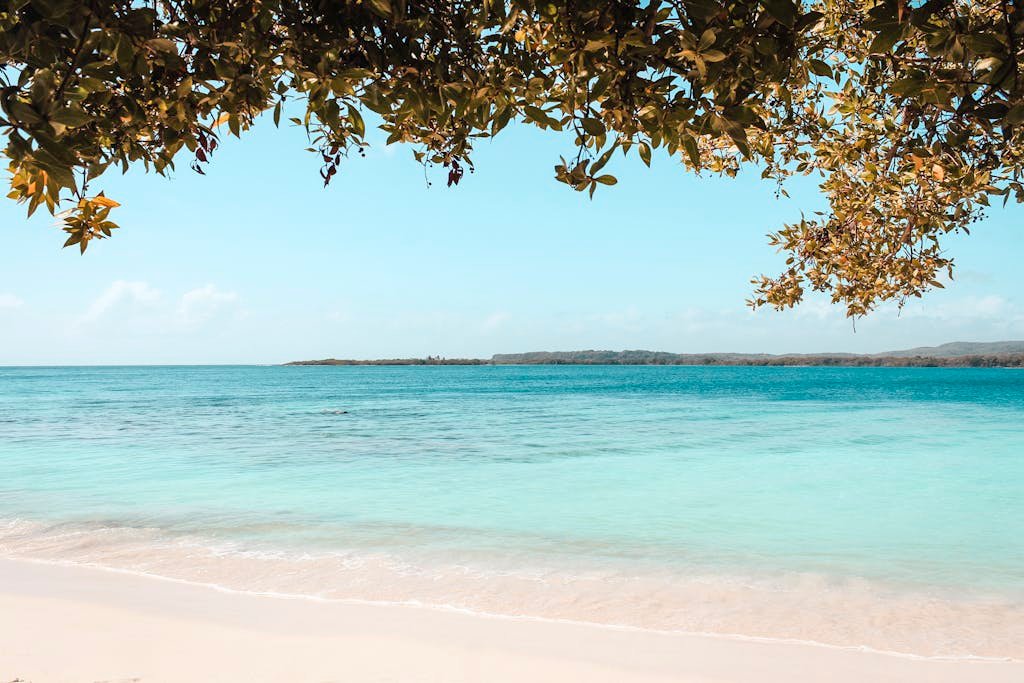Best Time to Visit Jamaica
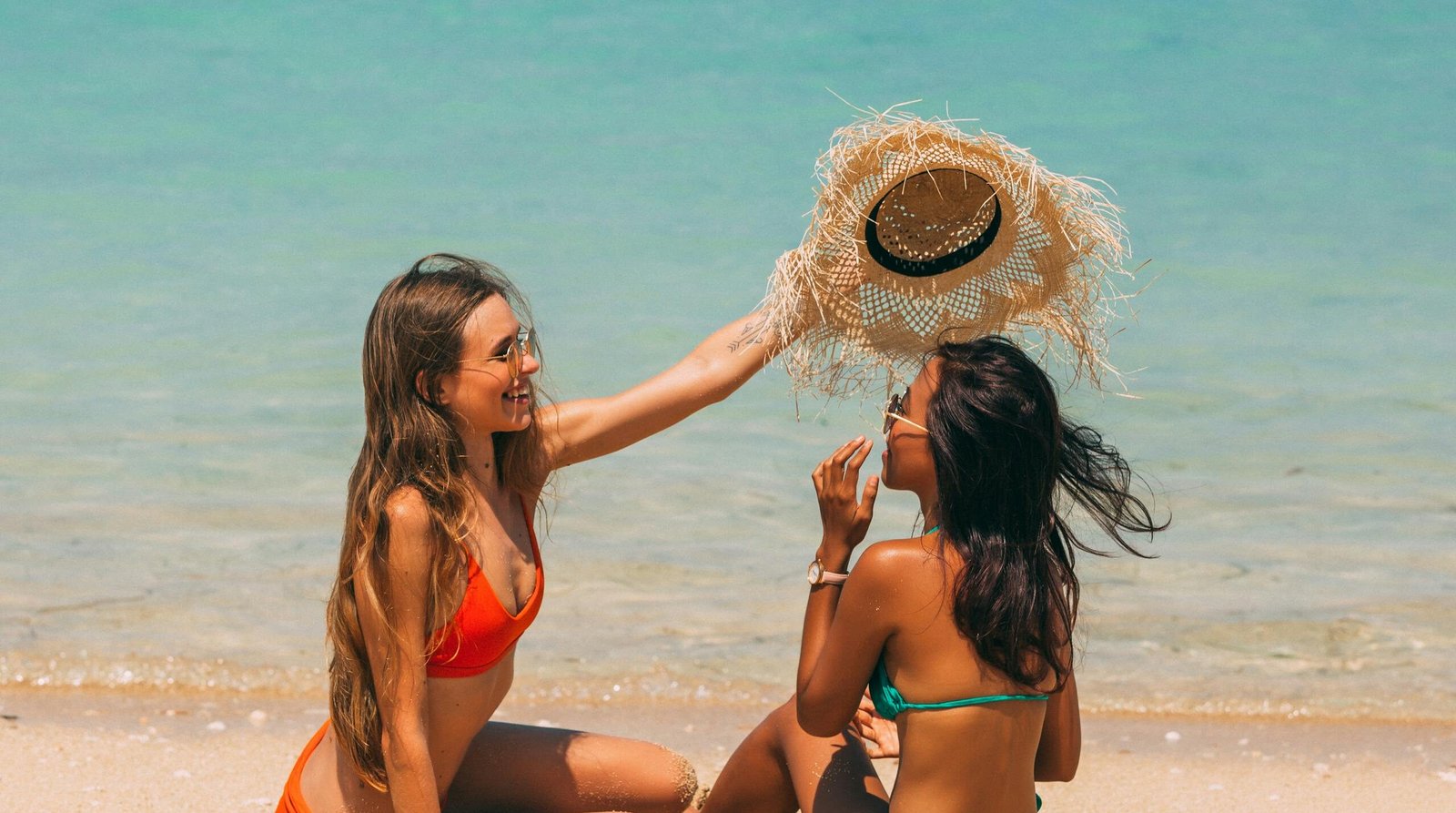
Planning a trip to Jamaica?
Then you’ll want to know the best time to visit Jamaica — and that’s exactly what you’ll learn in this article. (Many agree the peak season is ideal for a unforgettable Jamaican experience).
Jamaica is a tropical paradise with warm, inviting weather all year-round.
Top spots in Jamaica include Montego Bay, Negril and Ocho Rios.
If you’re looking for a relaxing beach getaway, Negril is the ideal destination. Be sure to visit the stunning Seven Mile Beach – it’s a must-see! If nightlife is a priority, stay in Montego Bay, and for adventure, Ocho Rios is definitely worth exploring.
In this guide, you’ll find answers to the question: When is the best time to visit Jamaica?
If you’ve been wanting to travel to Jamaica, let’s get to it — so you can finally book that Jamaica trip!
Best Time to Visit Jamaica: The Seasons
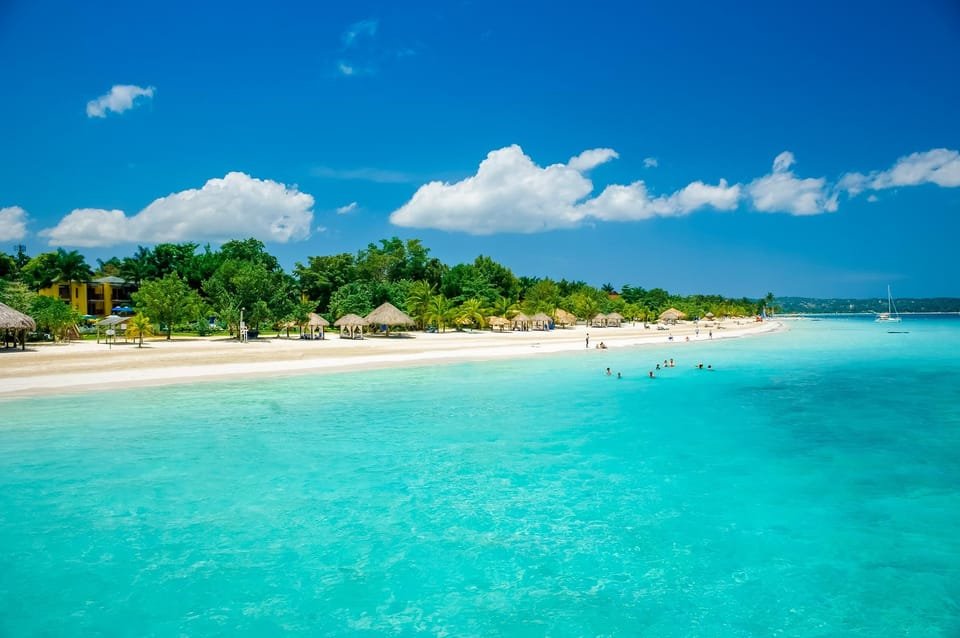
Unlike countries with four seasons, Jamaica offers consistently warm temperatures year-round, so you can comfortably visit any time.
Jamaica has a tropical climate with distinct wet and dry seasons.
🌧️ Jamaica has two rainy seasons: the first runs from May to June, and the second from September to November.
☀️ Jamaica has two dry seasons: one from July to August and the other from December to April.
🏖️ For most visitors, the best time to visit Jamaica is the dry season from mid-December to April. This period is known for warm, sunny days — perfect for beachgoers and outdoor lovers.
The temperature averages about 80°F (26°C) during this time.
This period coincide with the peak season in Jamaica which runs from mid-December to mid-April, so this period is a great time to visit if you don’t mind lively crowds and bustling beaches.
Although Jamaica is a year-round destination, every traveler’s “best time to visit” depends on their preferences.
Let’s discuss this in more detail, so you know your best time to visit Jamaica.
Best Time to Visit Jamaica For The Weather
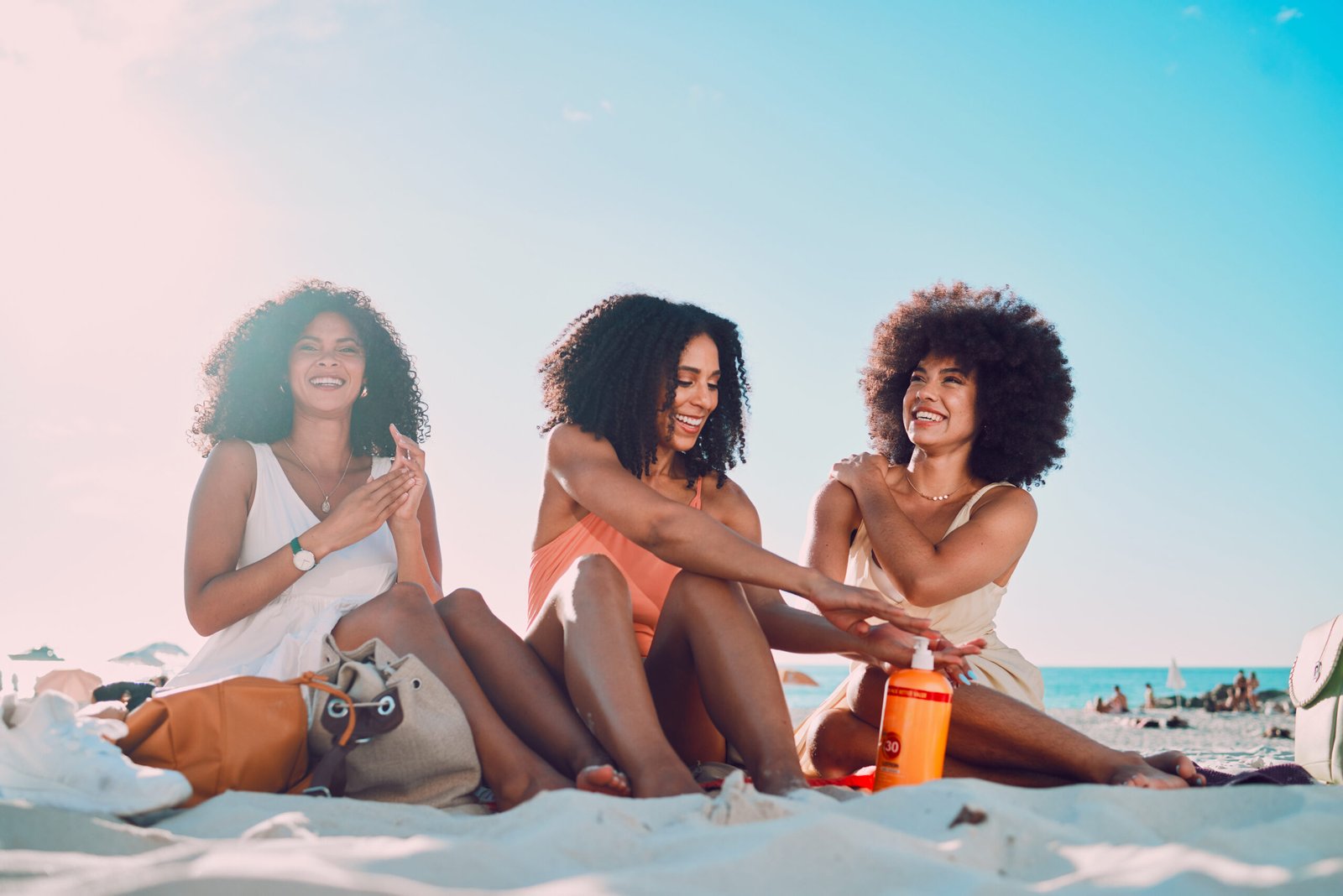
Jamaica’s tropical climate brings warm temperatures year-round, with only slight variations between dry season and the rainy season.
Temperature in Montego Bay:
Montego Bay has warm weather year-round, with high temperatures ranging from 82°F to 91°F (28°C to 33°C). The warmest month is July, reaching up to 91°F (33°C), while the mildest period is usually in January, when high temperatures are around 82°F (28°C).

Temperature (°F) – Montego Bay, Jamaica 
Temperature (°C) – Montego Bay, Jamaica
Temperature in Negril:
Negril has warm weather throughout the year, with high temperatures ranging from 82°F to 86°F (28°C to 30°C). The warmest month is July, reaching up to 86°F (30°C), while the mildest period is in January, when high temperatures are around 82°F (28°C).

Temperature (°F) in Negril, Jamaica 
Temperature (°C) – Negril, Jamaica
Temperature in Ocho Rios:
Ocho Rios has warm weather throughout the year, with high temperatures ranging from 84°F to 88°F (28°C to 36°C). The warmest month is June, reaching up to 88°F (31°C),while the mildest period is in January, when high temperatures are around 84°F (29°C).

Temperature (°F) in Ocho Rios, Jamaica 
Temperature (°C) – Ocho Rios, Jamaica
Temperature in Kingston:
Kingston has warm weather throughout the year, with high temperatures ranging from 86°F to 91°F (30°C to 33°C). The warmest month is July, reaching up to 91°F (33°C),while the mildest period is in January, when high temperatures are around 86°F (30°C).
If you’re seeking a relaxing beach vacation, Montego Bay, Negril, or Ocho Rios are your best options. While Kingston have warmer temperatures, Montego Bay, Negril and Ocho Rios offer the perfect mix of sun, sand, and sea.

Temperature (°F) – Kingston, Jamaica 
Temperature (°C) – Kingston, Jamaica
Best Time to Visit Jamaica For The Sun
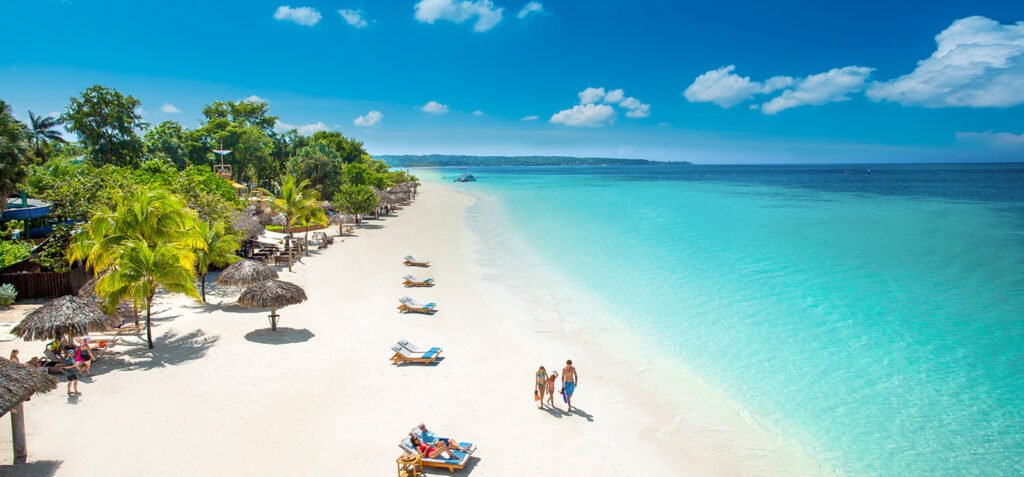
Jamaica’s tropical climate means plenty of sunshine and warm temperatures throughout the year, with only slight variations between the dry season and the rainy reason.
Sunshine Hours in Montego Bay:
Montego Bay has warm weather year-round, with sunshine hours ranging from 8 to 11 hours each day. July has the most sunshine hours, reaching up to 11 hours per day, while January typically has the fewest, with 9 hours of sunshine per day.

Sunshine Hours – Montego Bay, Jamaica
Sunshine Hours in Negril:
Negril has warm weather year-round, with sunshine hours ranging from 8 to 11 hours each day. July has the most sunshine hours, reaching up to 11 hours per day, while October and November usually have the lowest, with 8 hours of sunshine per day.

Sunshine Hours – Negril, Jamaica
Sunshine Hours in Ocho Rios:
Ocho Rios has warm weather year-round, with sunshine hours ranging from 7 to 10 hours each day. July and August have the most sunshine hours, reaching up to 10 hours per day, while November usually has the lowest, with 7 hours of sunshine per day.
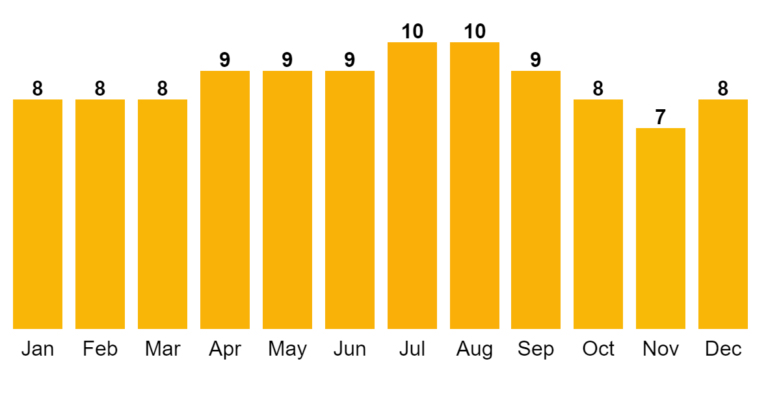
Sunshine Hours – Ocho Rios, Jamaica
Sunshine Hours in Kingston:
Kingston has warm weather year-round, with sunshine hours ranging from 7 to 9 hours each day. April, May, July, August, and September have the most sunshine hours, with 9 hours per day, while October and November have the lowest, with 7 hours of sunshine per day.
The Sea Temperatures in Jamaica

In Jamaica, every day feels like a beach day, with inviting sea temperatures averaging 81°F (27°C) from January to April and warming up to 84°F (29°C) between July and November.
With an average water temperature of 82°F (28°C) and crystal-clear beaches, you can snorkel year-round whenever you feel like it. While peak season brings slightly cooler air and better water visibility due to less rain, visiting in the low season is just as enjoyable.
If you’re planning to visit Montego Bay, Negril, or Ocho Rios, here are the sea temperatures for each location:

Sea Temperature (°F) – Montego Bay, Jamaica 
Sea Temperature (°C) – Montego Bay, Jamaica 
Sea Temperature (°F) – Negril, Jamaica 
Sea Temperature (°C) – Negril, Jamaica 
Sea Temperature (°F) – Ocho Rios, Jamaica 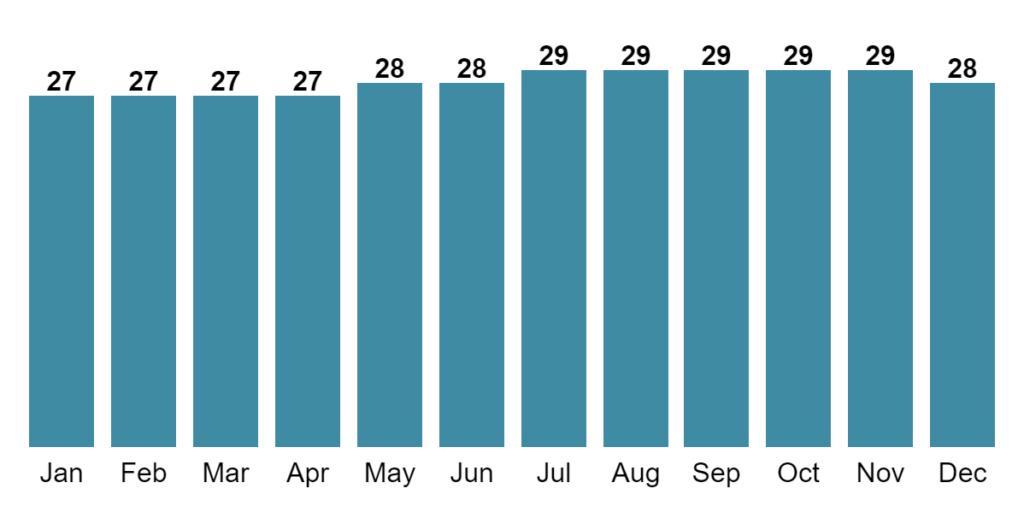
Sea Temperature (°C) – Ocho Rios, Jamaica 
Sea Temperature (°F) – Kingston, Jamaica 
Sea Temperature (°C) – Kingston, Jamaica
While Kingston offers cultural and historical experiences, it’s not typically considered a beach destination like the other destinations mentioned.
The Rainy Season In Jamaica
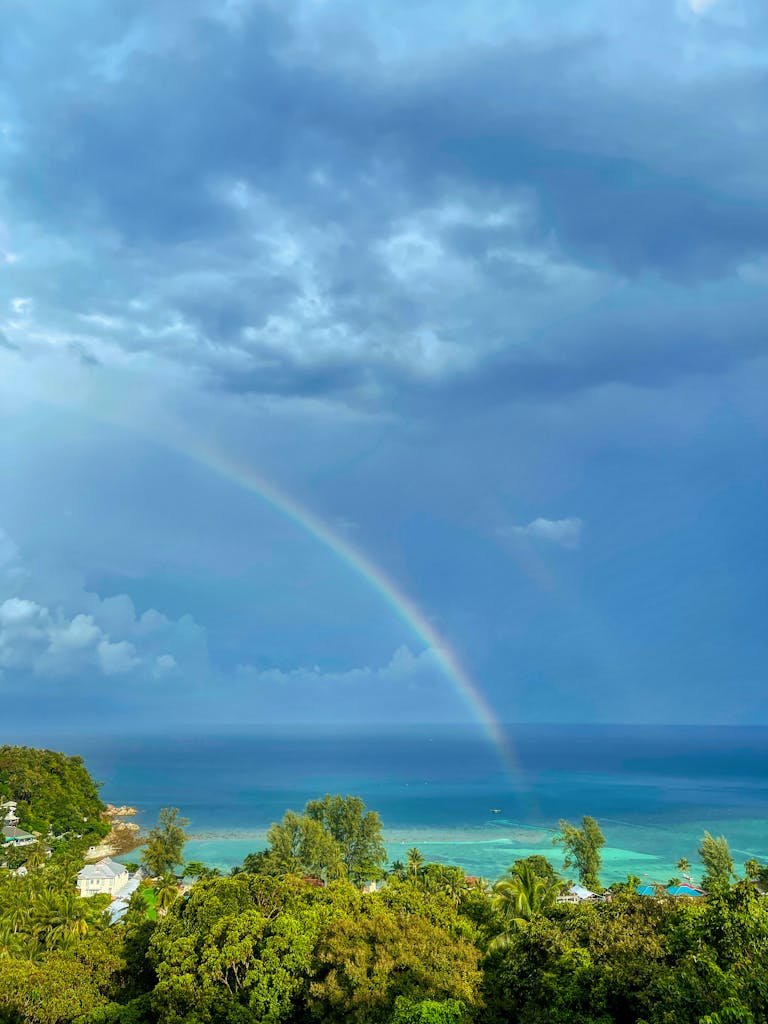
Jamaica’s rainfall is influenced by northeast winds, especially between September and November when the northern coast sees a bit more rain.
The southern region, including Kingston, is sheltered from these winds by the Blue Mountains and central hills.
The central mountains, due to their higher elevation, get more rain than the coastal areas, making them beautifully lush and green.
Rainfall in Montego Bay:
Montego Bay gets about 37 inches (950 millimeters) of rain annually. The wettest months are from September to December. It’s still a great time to visit because the beaches are quieter, and accommodation rates are often lower.

Rainfall – Montego Bay, Jamaica
Rainfall in Negril:
Negril experiences its wettest month in October, with an average of 8.7 inches (222 millimeters) of rainfall, while the driest months, December through March, see less than 3 inches (57.5 millimeters) each. Negril receives about 62 inches (1583 millimeters) of rain each year. This is slightly more than other popular destinations. Despite this, Negril has some of the country’s most beautiful beaches, making it a fantastic beach destination year-round. Furthermore, Seven Mile Beach is definitely a must-visit.

Rainfall – Negril, Jamaica
Rainfall in Ocho Rios:
Ocho Rios gets about 37 inches (950 millimeters) of rain annually, with September and October being the wettest months. Despite this, Ocho Rios is an excellent destination for adventure and a fantastic place to visit year-round. Additionally, Dunn’s River Falls is a must-see attraction.

Rainfall – Ocho Rios, Jamaica
Rainfall in Kingston:

Rainfall – Kingston, Jamaica
It’s worth noting that Jamaica rarely experiences a full day of rain. As a tropical destination, showers often occur during one part of the day, leaving plenty of sunshine for the rest.
Best Time to Visit Jamaica For The Events
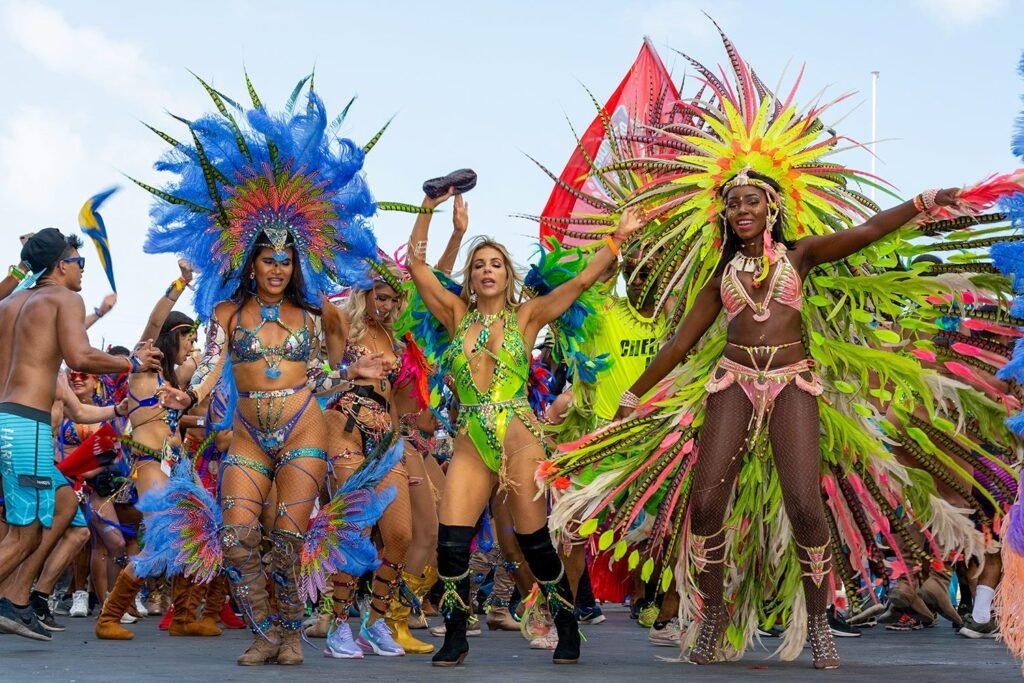
Jamaica is bursting with festivals and celebrations throughout the year. From reggae concerts to beach parties, there’s always something happening. If you want to experience Jamaica’s vibrant culture, here’s the best time to visit Jamaica for the best events!
1. Jamaica Carnival
Locations: Montego Bay, Kingston, Ocho Rios
When: January to April (each year)
Jamaica Carnival is a lively celebration is filled with color, music, dance, and delicious food. Immerse yourself in the true Jamaican spirit as the streets of Montego Bay, Kingston, and Ocho Rios come alive. From beach parties to street parades, Jamaica Carnival is a one-of-a-kind experience. The main event is the Road March, which a lively parade through the streets of Kingston. It takes place every April.
2. Bob Marley Week
Location: Kingston
When: February (each year)
In the first week of February, reggae fans and Rastafarians gather in Kingston to celebrate the life and legacy of Jamaica’s iconic musician, Bob Marley. The week is packed with events like symposiums, lectures, karaoke contests, a fashion show, exhibitions, and more — all dedicated to Bob Marley’s influence. A highlight of the week is the “Redemption Live” concert, offering an authentic celebration of Bob Marley’s music and message, which remain deeply woven into Jamaican culture.
3. Montego Bay Yacht Club Easter Regatta
Location: Montego Bay
When: March/April (each year)
For a lively weekend of maritime excitement, head to the Montego Bay Yacht Club’s Easter Regatta. Whether you’re joining the action on the water or watching the elegant sails from a cozy spot onshore, you’ll enjoy a few days of delightful entertainment over the Easter weekend.
4. The Ocho Rios Jazz Festival
Location: Ocho Rios
When: June (each year)
Starting as a one-day event in 1991, the Ocho Rios Jazz Festival has grown into an eight-day celebration of Jamaican jazz, attracting top talent from around the world. Known as the region’s oldest jazz festival, it’s perfect for families looking to enjoy a “Jazz Vacation” across various locations, from Ocho Rios to Kingston.
5. The Reggae Sumfest
- Location: Montego Bay
- When: July (each year)
Reggae Sumfest brings together top Jamaican and international artists, with past performers including Damian ‘Jr. Gong’ Marley, Beres Hammond, and Maxi Priest. This 6-night event is packed with excitement, featuring an all-white blitz party, a sound system explosion, and a beach party, along with three main concerts. It’s a full week of summer fun and reggae vibes in Montego Bay.
Best Time to Visit Jamaica: FAQS
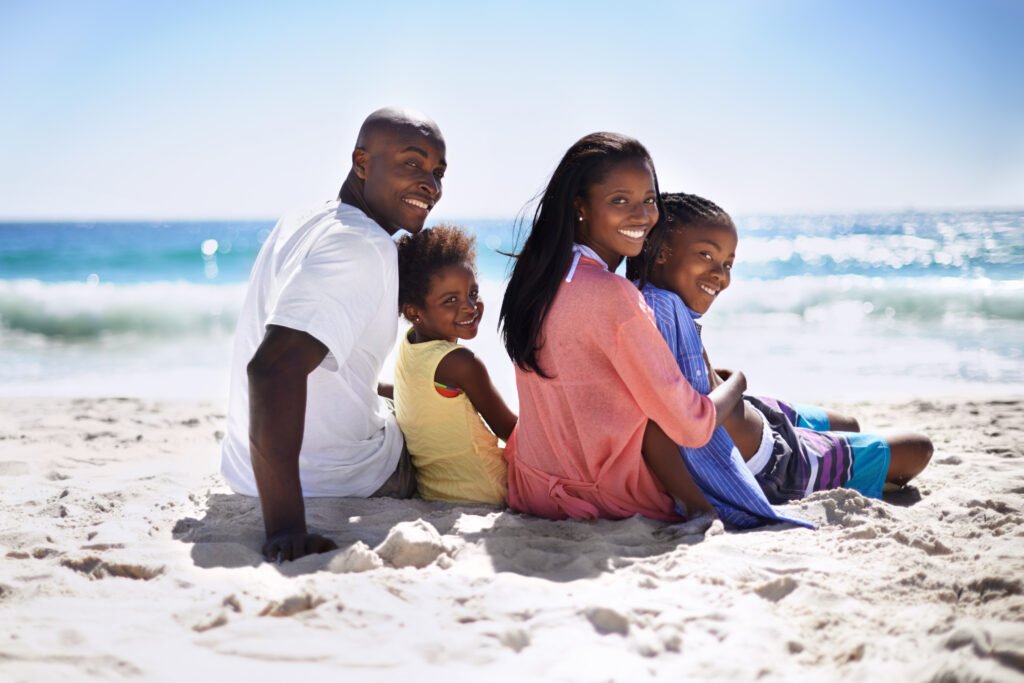
Here are some frequently asked questions about the best time to visit Jamaica, along with answers to help you plan your trip!
1. What is the best time of year to visit Jamaica?
The best time to visit Jamaica for warm, sunny weather is during the dry season from mid-December to April. This is also peak season, so expect more tourists but ideal conditions for outdoor activities and beach days. Here is a more detailed breakdown:
- The best time to visit Jamaica for the weather is mid-December to April, with sunny days and lower humidity.
- The best time to visit Jamaica for sun is mid-December to April, when rain is less frequent, and the skies are clear.
- The best time to visit Jamaica for lower prices is June to September during the off-peak season.
- The best time to visit Jamaica for fewer crowds May to mid-December, especially during the shoulder seasons.
2. When is Jamaica’s peak season?
Peak season in Jamaica is between Mid-December to mid-April, when the weather is at its best.
3. When is Jamaica’s Dry Season?
Jamaica’s dry season runs from December to April. This period sees the least rainfall, making it ideal for beach days and outdoor activities. It’s also part of the peak season, with sunny days, lower humidity, and pleasantly warm temperatures.
4. When is Shoulder Season in Jamaica?
The shoulder season in Jamaica is between mid-April to May and November to mid-December with fewer tourists and moderate prices.
5. When is Low Season in Jamaica?
The low season in Jamaica is between June to September.
6. When is the Rainy Season in Jamaica?
Jamaica’s rainy seasons are May to June and September to November. However, the rain is often brief, with sunshine following, so it won’t usually disrupt an entire day.
7. When is Jamaica less crowded?
To avoid crowds, consider traveling during the shoulder seasons (May to mid-June and mid-September to early December).
8. When is the cheapest time to visit Jamaica?
The cheapest time to visit Jamaica is usually during the low season from June to September and parts of the shoulder season (May and October–November). Hotels and flights tend to offer lower rates during these months.
9. Can you swim in the ocean year-round in Jamaica?
Yes, Jamaica’s sea temperatures range between 81°F and 84°F (27°C to 29°C) year-round, making it comfortable for swimming and water activities no matter when you visit.
10. When is the best time to visit Jamaica for festivals?
Jamaica celebrates lively festivals all year. Key events include Bob Marley Week in February, Jamaica Carnival in April, and Reggae Sumfest in July. These festivals are a great way to experience Jamaican culture.
11. Are there any entry requirements I need to be aware of?
Yes, visitors to Jamaica need specific documents for entry based on their nationality.
You can view Jamaica’s entry requirements here.
12. Where should I stay in Jamaica?
Staying at an all-inclusive resort is a popular option in Jamaica. The island offers a variety of all-inclusive resorts, from luxury resorts to budget-friendly resorts. There are also great adults-only, couples-only, and family-friendly resorts, so you can find the perfect fit for your stay. If nightlife and partying are what you’re after, there are several lively resorts that offer great nightlife and party scenes.
13. What’s the best area to stay in Jamaica?
if you’re after a laid-back vibe and breathtaking sunsets, head to Negril. For stunning beaches, visit Seven Mile Beach in Negril. If lively nightlife is what you’re after, Montego Bay is the ideal spot. And for adventure lovers, Ocho Rios is a must-visit with its waterfalls and outdoor activities. Each location offers something unique to make your Jamaican getaway unforgettable.
14. How many days should I stay in Jamaica?
Spending 7 days in Jamaica is ideal to experience the best the island has to offer. This allows time to explore areas like Montego Bay, Negril, and Ocho Rios, enjoy beach days, go on tours, and immerse yourself in Jamaica’s vibrant culture. For a shorter visit, 4 days in Jamaica or 5 days in Jamaica can still provide a great taste of the island by focusing on a few key spots and experiences. Even with just 3 days in Jamaica, many travelers still have an amazing time. If you wish to see more of what Jamaica has to offer, including hidden gems, 14 days or more is ideal.
Is Jamaica worth visiting?
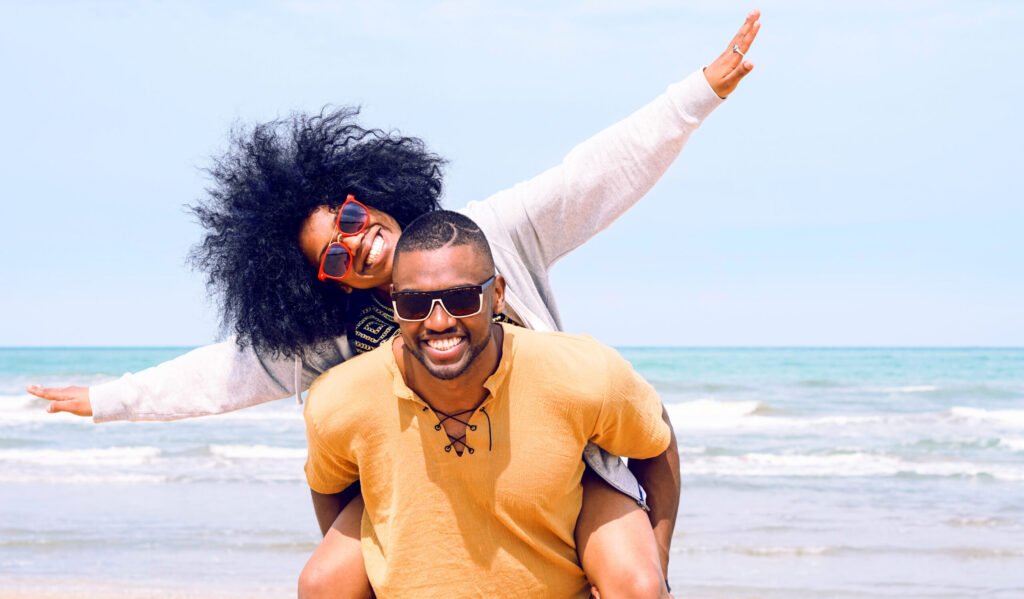
Absolutely! Jamaica is a fantastic destination any time of the year.
For warm, sunny days, the best time to visit Jamaica is during the dry season from mid-December to April. If you prefer fewer crowds and lower prices, the months of May to June and mid-September to early December are perfect.
Even in the rainy season, rain often falls briefly, followed by sunshine—so you can get on with your day.
Whether you’re in Jamaica for a short period or long stay, you’ll find beautiful beaches, vibrant culture, and unforgettable experiences.
Best Time to Visit Jamaica: Final Thoughts
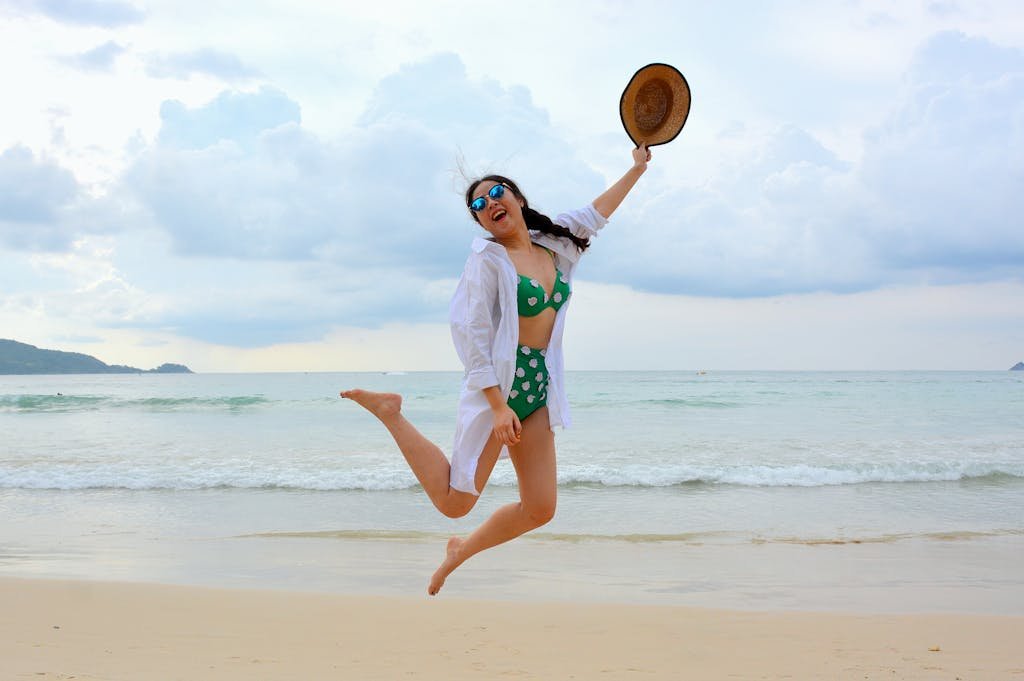
Jamaica is truly a year-round paradise, thanks to its warm, tropical climate.
But Jamaica is more than just a destination—it’s a feeling that stays with you.
Picture sand between your toes, warm sunshine on your skin, and the welcoming smiles of its people.
Now you know the best time to visit Jamaica.
Whether you’re exploring Montego Bay, relaxing on Negril’s beaches, or chasing waterfalls in Ocho Rios, there’s no wrong time to visit. But plan your trip during the dry season from mid-December to April for the best weather.
Come for the beauty, stay for the vibe—this is Jamaica, a place that stays with you long after you’ve left! 🇯🇲
Before you go — be sure to check out the entry requirements for Jamaica here.
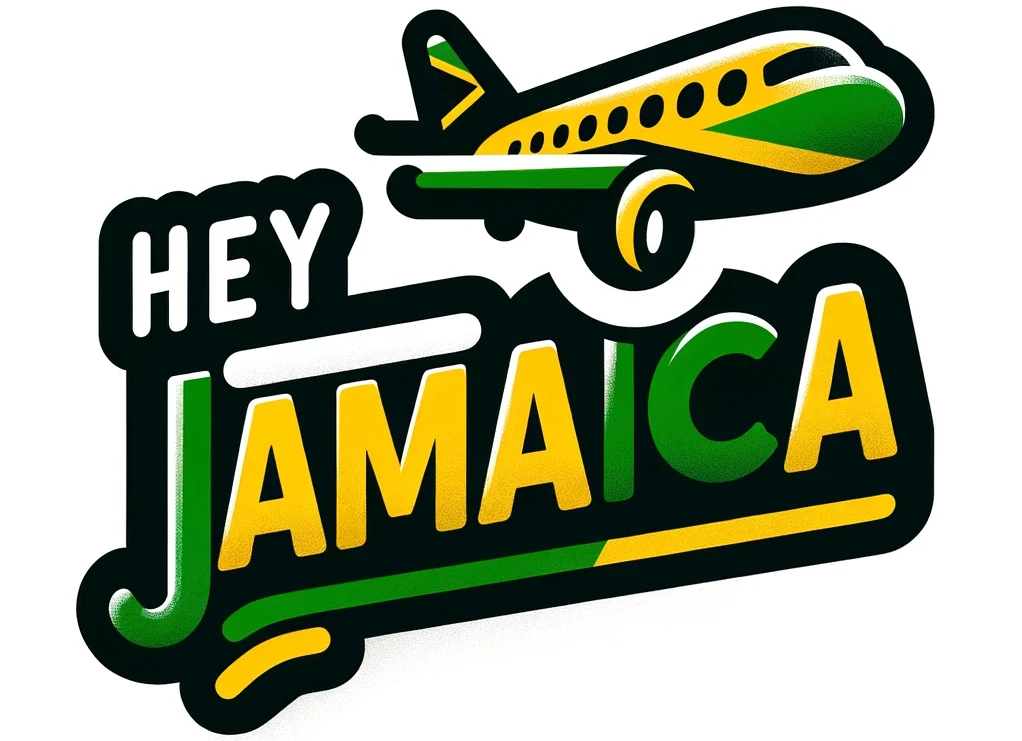
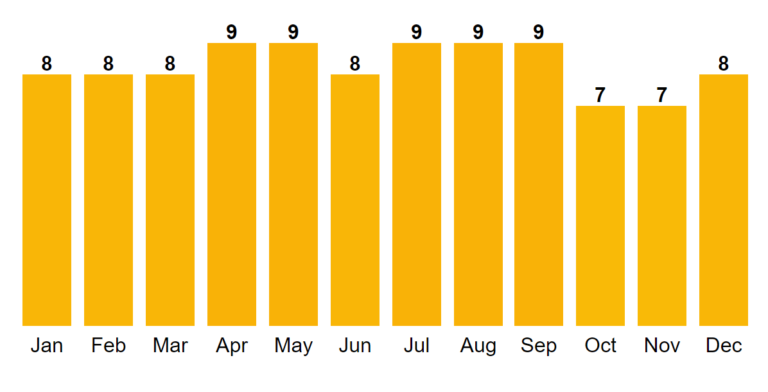
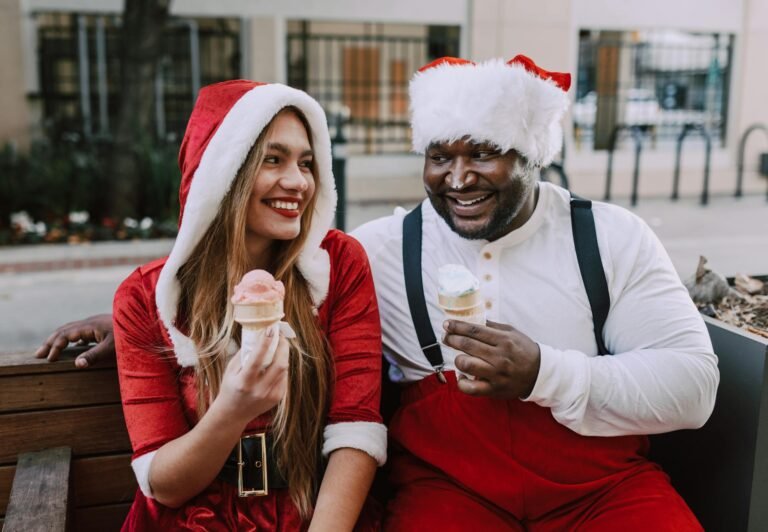
![Green Grotto Caves, Jamaica [2025]: Everything You Need to Know](https://www.heyjamaica.com/wp-content/uploads/2024/08/Green-Grotto-Caves-Jamaica-768x512.jpg)
